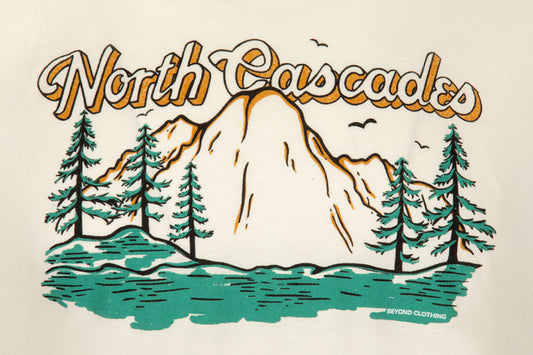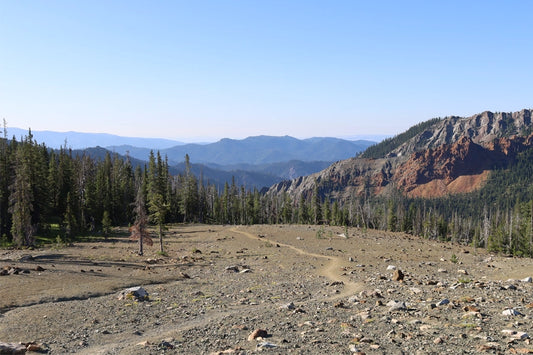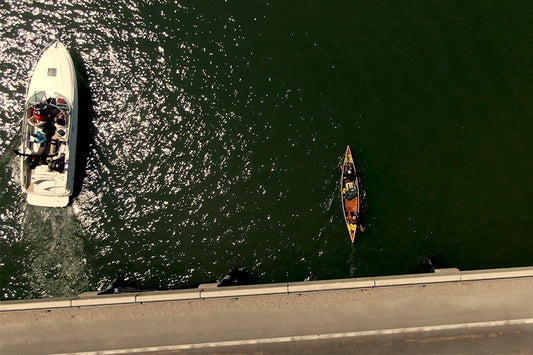This is the time of year that most would consider the start of “camping season” and camping isn’t quite camping without a campfire. The crackle of burning firewood, the amber glow against forested backdrops and the warmth from a bed of coals is unmatched for ambiance. It is easy to get hypnotized by the idea of fire to a point where we don’t respect it. Before you strike off to a campsite near you with a bundle of wood, a ferro rod, and a hatchet, follow our expert guidance.

Don’t Start Fires You Can’t Put Out
There are four stages of fire; prep, starting, maintenance, and extinguished. It is easy to jump right to fire starting without realizing you need to be able to extinguish any fire you start. If you don’t have this control, you could do serious harm to your surroundings and potentially endanger yourself and others. Make sure you have plenty of water handy as well as a shovel or digging stick to stir the coals in the slurry. Also, consider how much wood is needed to accomplish a task (like cooking, boiling water, warming oneself) and don’t overdo it.

Prepare Your Workspace
Long before you are ready to start your fire, you need to make sure your workspace is ready to accept the fire you’re building. Preparing your workspace prevents tripping over rocks and other obstacles as you build your fire. It also means clearing out dry leaves or tinder that could catch if a spark jumps. Make sure to inspect the area around your fire both on the ground as well as above since embers and sparks can easily ignite dry foliage. Preparing your workspace also means rolling up your sleeves. I’d rather singe my arm hair with an ember than put a hole in an expensive jacket as I blow a coal into a flame.
Accelerants Are Awesome But…
…not all fire accelerants are safe. DO NOT use gasoline or white gas to start a fire. Kerosene on a rag is relatively safe but the most safe option is petroleum jelly on cotton balls. If you end up in an emergency situation, use fuels that burn but do not explode. The good ones are referred to as “liquid boy scout.” The bad ones are a free ticket to the emergency room and a way to quickly remove your eyebrows.
When I was growing up, every kid experimented and played with matches in the yard and we all learned that matches burn fingertips. It sounds basic, but fire burns when you get close to it. Sometimes, when we are attempting to start a fire, we put our hands inside of our firelay at awkward angles to ignite it but burn our fingers instead. Rather than getting too close, use an extender like a split forked stick to hold your tinder or long-handled matches.

Fire Dances
When the wind blows, fire dances. When you topple a fire lay, logs roll and spread in every direction. Fire is life and fire has life. You must remember to control the fire you make and avoid instability in your platform. If you can shield your fire from the wind, you can avoid jumping embers. Handling logs in your fire, you can accidentally grab a hot section and burn your hand. Wear flame-resistant gloves to protect your hands or you too will perform a fire dance.

When you build enough fires, you’ll subconsciously make decisions to keep yourself safe in the process. Until then, take your time, follow all the fundamentals, and enjoy the process. With each attempt, you’ll develop more competency and soon your campfire season will be year round as it should be. Go BEYOND what most others do!
About the Author:
Kevin Estela is the Best-Selling Author of 101 Skills You Need To Survive In the Woods. He is the Director of Training for Fieldcraft Survival and has been an outdoor educator for over 2 decades. Blending traditional bushcraft with modern survival skills, he is a highly sought after trainer who prides himself in making his students stronger with each day. Estela has written over 175 magazine articles in 25 different titles. He is a regularly featured guest on podcasts, expos, and trade shows. His background and training includes instructor ranking in Sayoc Kali, purple belt in Brazilian Jiu Jitsu, completion of dozens of firearms courses, and interests in skiing, scuba, kayaking, and personal fitness.










0 Comments